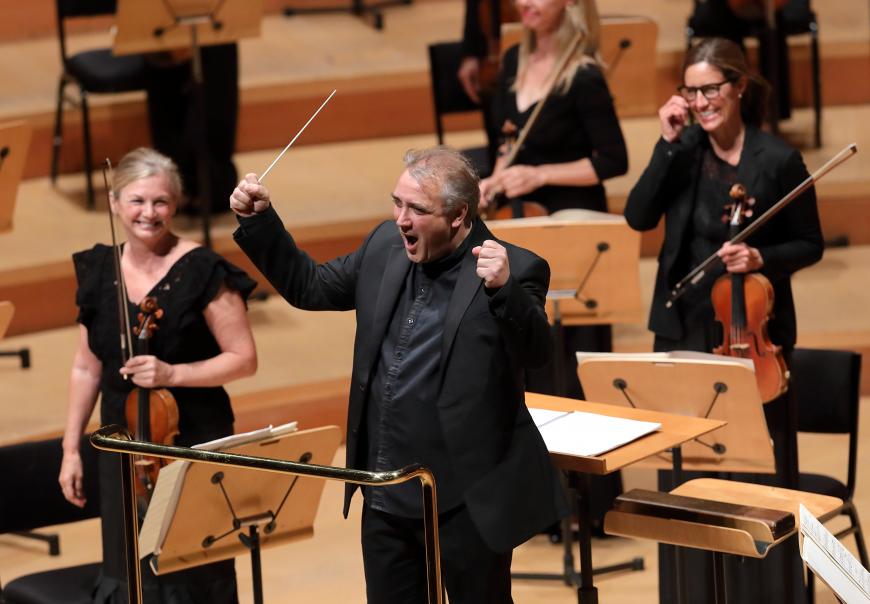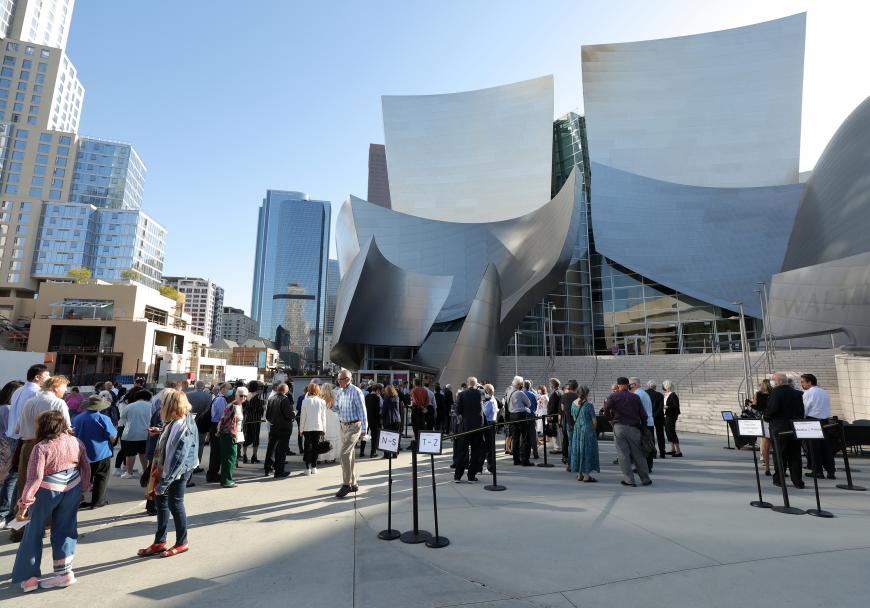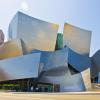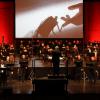
It was a choreographed moment of joy and defiance a year and a half in the making, when on June 26, 2021, concertmaster Margaret Batjer, elegant in black and fully masked, strode on stage at Walt Disney Concert Hall. She faced the masked musicians of Los Angeles Chamber Orchestra, and with a graceful gesture they all simultaneously removed their masks. The limited invited audience cheered its approval.
“We’re back,” proclaimed LACO Executive Director Ben Cadwallader, a sentiment that was echoed by a jubilant Jaime Martín, LACO’s music director. It was the first time after so many months that the sound of classical music filled the hall.
But are we back?
The consensus among musicians, administrators, and union representatives is a positive, but qualified, “Yes.” Throughout the country, orchestras are offering outdoor summer concerts; Broadway theaters will soon reopen; touring companies are getting their acts together and taking them on the road; theme parks (like Disneyland) are rapidly hiring back hundreds of laid-off and newly auditioned performers, as are cruise ship lines that rely on thousands of performers for onboard entertainment.
But there’s been a setback. Despite the opinion expressed by Los Angeles County Health Department Director Barbara Ferrer that being vaccinated is equivalent to “wearing a suit of armor,” a surge in Delta variant infections in Los Angeles (predominantly among unvaccinated people) has forced the reinstatement of masking requirements for all “indoor public settings.” The order, said Health Officer Dr. Muntu Davis, will remain in place “until we begin to see improvements in … community transmission.”

Nationwide, thousands of musicians, singers, and dancers who suffered so much hardship during the pandemic are desperate to return to work. Likewise, the organizations that employ them are equally desperate to revive more than a year of lost revenue streams. And while the new masking requirement in Los Angeles should not affect the summer season at the Hollywood Bowl, it does cast a shadow of doubt regarding the LA Phil’s gala Oct. 9 “homecoming concert,” scheduled to take place indoors at Disney Hall.
There are major issues that have to be resolved. Can performance admission be based (legally) on proof of vaccination, and who will be responsible for enforcement? This may cause problems in parts of the country where anti-vaccination sentiment prevails. It certainly seems unreasonable to expect ushers to function as COVID police. Which brings us back to LACO’s concert. Could the protocols the organization instituted serve as a model for the return of indoor performances?
Here’s how it worked: Prior to receiving a physical ticket, each audience member had to present a copy of their CDC vaccination card along with a driver’s license to confirm their identity. At that point a ticket was issued and a wristband was attached that had to be shown to an usher at the entrance, along with the ticket, to gain admittance to the hall. From that point on (with the exception of some blocked-off seats) it felt in every way like a normal concert — no masks, no social distancing, and lots of hugs.
Protocol Frustration

In the L.A. music scene, Marc Sazer is a player in every sense of the word. He is a violinist and core member of the Pasadena Symphony; he’s an on-call, A-team studio musician; president of the Recording Musicians Association; and an active member of American Federation of Musicians, Local 47. Sazer played a key role in negotiating the complex set of health protocols that allowed L.A.’s film and television industry musicians to return to the soundstage. Now he’s involved in the negotiations that will establish protocols for the road ahead.
“Throughout the pandemic everyone realized how important the entertainment industry is,” Sazer explained. “We’ve gone from a situation 14 months ago when there was no work at all, to a situation a year ago when we were making sure everyone was tested and every situation would be as safe as possible, to a situation now where everyone is still being tested even though they are fully vaccinated. We have had musicians who were completely vaccinated get false-positive test results that caused them to unnecessarily lose work. The thing that’s so frustrating is the protocols have not been standardized even as more and more people get vaccinated. It’s maddening.
“What we all want is to get back to some degree of normalcy, and there is no good answer as to why we don’t have a standardized policy. But part of the answer is that we are a multi-union, multi-employer industry. You have IATSE [International Alliance of Theatrical Stage Employees]; you have SAG-AFTRA [Screen Actors Guild - American Federation of Television and Radio Artists]; the DGA [Directors Guild of America]; and the Musicians Union, Local 47. The initial agreement that was reached calls for constant testing, masking, and distancing. Those protocols are still in place. The position that Cal/OSHA [Occupational Safety and Health Administration] has taken is that collective bargaining agreements prevail over whatever health statements they’re putting out. But,” Sazer added stoically, “everyone realizes this is a transition phase.”
Curtain Going Up for Broadway and Bus-and-Truck Musicians

As president of the Theater Musicians Association, Tony D’Amico represents more than 400 members in the U.S. and Canada, with chapters in Boston, Chicago, Northern California, Southern California, Dallas-Fort Worth, Detroit, Las Vegas, Phoenix, St. Louis, and Washington D.C.
“The association focuses on issues specific to theater musicians,” D’Amico explained, “whether on Broadway, in other cities, or on tour. During the pandemic, the TMA was primarily concerned with offering ways for our members to share resources. At first, we thought it would only last a few weeks, not 15 months!”
But rather than wait for a green light to return to work, D’Amico said his organization decided to be proactive.
“We knew at some point our members would be able to go back to work, and we wanted to be ready. Over a year ago, we started talking to the directors of theaters, booking and touring agents, and the AFM [American Federation of Musicians] across the country to come up with protocols that will cover all the bases, or at least provide a solid jumping-off point for negotiations. The idea was that when that happy day comes, and we all can go back to work, everything necessary for musicians’ safety will be in place.”
And then there’s “Pamphlet B.”
“Every show that goes out on the road operates under a contract called ‘Pamphlet B,’ which is funny because there is no Pamphlet A. What’s happening right now as touring starts to come back is we are in negotiations with the Broadway League, which includes producers all over the country and the Disney Corporation. We’re talking about safety protocols, things like cleaning the pit, whether it will be necessary, when you’re backstage, to be masked. But most importantly we’re discussing what happens when someone involved with a production comes down with COVID. Will they have to quarantine? Will they be paid?
“For example, the rehearsal I was just at [D’Amico plays double bass with the Boston Pops] required everyone to be vaccinated. It’s my understanding, but don’t hold me to it, that orchestras can legally require musicians to be vaccinated. The hope is that audiences can be required to be vaccinated too.”
Music at the Magic Kingdom

When Edmund Velasco was a 26-year-old saxophone player, he got a gig playing at Disneyland. He performed with a Dixieland band at the Carnation Plaza and Ice Cream Parlor and marched in the Main Street and Electric Light Parade. It was a good gig, and he held it for the next 28 years.
On Jan. 8, 2020, with the pandemic looming, Velasco took over as president of Orange County Musicians Union, Local 7, which represents the musicians that perform throughout the theme park, as well as the classical musicians of Pacific Symphony and the South Coast Symphony.
“Before the pandemic,” Velasco explained, “Disneyland employed around 240 musicians. Of those a small number were full-time, a large number were categorized as Casual Regulars, and an even larger number work in a category called Casual Temporary. The singers and dancers are represented by the American Guild of Variety Artists.”
According to Velasco, negotiations for the return of musicians to Disneyland and Orange County’s two classical orchestras have been going on for some time.
“We’ve had to renegotiate every work agreement we have, including Disneyland. That’s been going on for more than a year. First, we had to negotiate our way into the pandemic. Now, we’re trying to negotiate our way out.
“Throughout the pandemic, Pacific Symphony continued to pay their musicians a percentage of their salaries so they could at least get by. But all the performers that worked at Disneyland were categorized as employees, so they were all laid off. We’re working with Disneyland and the orchestras to establish protocols to bring back as many fully vaccinated musicians as possible.
“I’d say right now [this interview took place before the current spike in infections and new masking requirements] that the mood is very positive. The fear is that we might have a relapse. This pandemic has been devastating for people that make their living playing music. If it happens again, it has the potential to wipe out the entire industry.”
Correction: In an earlier version of this article Marc Sazer was incorrectly identified as a member of the Los Angeles Opera Orchestra. We regret the error.




